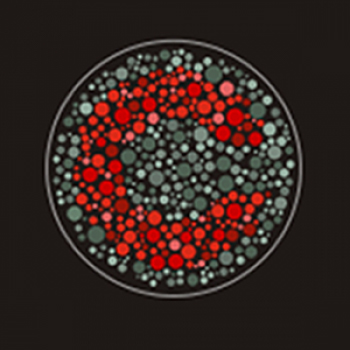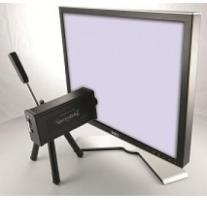Default Site / Tools for Vision Science / Cambridge Colour Test
Cambridge Colour Test

The Cambridge Colour Test provides a rapid means of screening subjects for colour vision deficiencies. It can also be used to examine in more detail the changes in colour discrimination that occur as a result of congenital or acquired conditions.
Cambridge Colour Test is one of several colour vision tests included in Metropsis. Metropsis is a complete ready to run system including the Cambridge Colour Test, Low Vision Colour Test, Visual Acuity, and Spatial & Temporal Contrast Sensitivity Function.
Investigate the limits of colour discrimination
The Cambridge Colour Test provides a rapid means of screening subjects for colour vision deficiencies; but it also can be used to examine in more detail the changes in colour discrimination that occur as a result of congenital or acquired conditions. It allows the investigator to monitor quantitatively over time the progression or remission of disease. Many drugs affect colour vision and the pharmacologist will find the test well suited to monitoring the short-term or long-term course of such side-effects.
The test determines discrimination ellipses in colour deficient subjects by probing chromatic sensitivity along the colour confusion lines. Ellipses measured in individuals with even slightly anomalous colour vision are characteristically orientated and enlarged (see references).
Easy to use
The procedure is easy to use for both the investigator and the subject. It uses the familiar Landolt C stimulus, defined by the two test colours that are to be discriminated, on an achromatic background.
The Cambridge Colour test uses the proven concept of introducing spatial and luminance noise into the stimulus, which is composed of grouped circles randomly varying in diameter and having no spatial structure. The Landolt C is therefore defined by chromaticity alone, ensuring that the subject's responses are not due to luminance or spatial cues in the stimulus, and thus avoiding the necessity for a preliminary procedure to find isoluminance for the test colours.
The test is conceptually very simple to explain to the subject, who responds to the orientation of the Landolt C using the 4-button infra-red response box. The chromaticity of the components of the C is varied along the protan, deutan and tritan lines (or other chromatic axes if desired) using a standard descending psychophysical staircase procedure.
The importance of stimulus resolution
The 8 bit output resolution of conventional computer graphics systems offer too coarse a resolution for measuring the limits of human colour discrimination. The stimuli are produced by ViSaGe, which provides 14 bit colour and luminance control and is calibrated using a ColorCAL. Cambridge Colour Test can therefore provide a finely graded measurement of discrimination and allows small changes to be monitored over time or in different experimental conditions.
Proven
The Cambridge Colour Test is an established method and has been widely used for both clinical and basic research including an extensive normative data set. (see references).
Results
Results are saved in ASCII format and presented graphically as discrimination ellipses in CIELUV or CIE(x,y) colour space. The results shown are typical of a subject with normal colour vision; in deficient subjects the discrimination ellipses are significantly extended in the protan, deutan or tritan chromaticity directions.

References
- The Cambridge Colour Test was developed by J.D. Mollon, J.P. Reffin & B.C. Regan at the Department of Experimental Psychology, University of Cambridge, England.
- An earlier version of the test is described in: Regan B.C., Reffin J.P., & Mollon J.D. (1994). Luminance Noise and the Rapid Determination of Discrimination Ellipses in Colour Deficiency. Vision Research, Vol. 34, No.10, pp.1279-1299.
- An extensive normative data set for clinical research applications is described in: Ventura D. F., Silveira L. C. L., Rodrigues A. R., de Souza J. M., Gualtieri M., Bonci D., & Costa M. F. "Preliminary norms for the Cambridge Colour Test". In "Normal and Defective Colour Vision", edited by Mollon, Pokorny & Knoblauch.
- More recently, Galina Paramei and her colleagues have collected a normative data set from 160 observers across a wide lifespan. This is described in three papers, firstly: Paramei G. V. (2012). Color discrimination across four life decades assessed by the Cambridge Colour Test. Journal of the Optical Society of America A, 29, A290-A297, secondly: Paramei G. V. & Oakley B. (2013). Chromatic discrimination across the lifespan assessed by the Cambridge Colour Test. In L. MacDonald, S. Westland, S. Wuerger (Eds.), AIC Colour 2013. 12th Congress of the International Colour Association. Proceedings (Vol. 2, pp.615-618), 8-12 July 2013, Newcastle, UK. The Colour Group (Great Britain) & International Colour Association, and thirdly: Paramei G. V. & Oakley B. (2014). Variation of color discrimination across the life span. Journal of the Optical Society of America A, 31, A375-A384 (2014).


